|
The pitch I had written for the Vermeer book was:
"After a young artist escapes a gunpowder explosion, but sees his mentor die, he struggles to make art that justifies his survival" I now feel this misses a key element the "ivory tower V scared fount' tension so have another version: "After a young artist sees his mentor die in a gunpowder explosion, he struggles to make art that justifies his survival, and support his ever-growing family."
0 Comments
All of the characters in the book are real historically documented individuals, although their personalities and relationships are a matter of fictionalised speculation from the few known facts.
Inspired by the John Truby book, I have matched these to character archetypes: Johannes ('Jan') Vermeer - The protagonist and 'artist/clown' archetype. A young painter newly accepted into the artists Guild. His father has recently died, and he will see a mentor figure die in the inciting incident. These two are his twin 'ghosts' that drive his desire to prove himself. Captain Melling ('The Captain') - former sea captain, now in an office job with the Dutch East Indies Company. Opponent/Ally, 'warrior' and 'king/father'. Unknown to most he is the romantic partner of Bramer. Leonaert ('Leon') Bramer - ally and 'mentor/teacher'. An older painter working between Delft and Rome. Antonie van Leeuwenhoek - Ally and 'magician'. Pioneering lens maker - Vermeer will cajole him to create (and keep secret) optical devices that Vermeer will use to make his paintings. He has lost children and will have conflict with Vermeer over his apparent neglect of them. Catharina Bolnes - ally and wife to Vermeer, and 'princess/rebel'. Vermeer and she, live with her mother (Maria - opponent/ally and 'queen or mother'), and this is a source of pressure through Catharina on Vermeer to monetise his art and be an effective provider. Carel Fabritius - 'ghost' and 'magician' and 'prince'. Artist killed in a gunpowder explosion in Delft. This is the inciting event of my story: I have Vermeer a reluctant witness to his friend and mentor Fabritius being pulled mortally wounded from the wreckage. This triggers his desire to justify his survival, and prove himself to his 'ghost' Fabritius. Pieter van Ruijven - art dealer and latterly Vermeer's patron. Ally/opponent and 'trickster/rebel'. Revelations slowly emerge about his history with Vermeer's family, and need to 'own' people. Pieter de Hooch - main opponent and 'King/trickster'. A painter only slightly older than Vermeer, yet more commercially and critically successful. Arriving in Delft after the explosion, Vermeer sees him as trying to replace Fabritius. Artists use of optics is the key mystery in the story. It is suggested that de Hooch uses them from the start, Vermeer will later use them, and his obtaining of de Hooch's methods through a duplicitous arrangement with van Ruijven is a moral turning point in the story. With the exception of van Ruijven and de Hooch, each of these characters plays a part in the first chapter (proposed for the semester 1 project), though Leon and Maria are off-stage. The inclusion or not of de Hooch in the first chapter is an important question, but there are both factual and narrative arguments for him appearing later. Vermeer's perception that de Hooch is an interloper, arriving on the back of tragedy, and (undeservingly) 'replacing' Fabritius as the pre-eminent artist of Delft is a key part of the conflict between these two. My original idea was to draw it in the style of Vermeer, and I think I succeeded in the 4-page sample. I had originally intended to have the constraint of every image being derived from a contemporary source - I didn’t quite achieve that, and in fact I now think the art most comes to life when I wasn’t so constrained, e.g. the last row of page two. I wanted to create a’painted’ look, with images being defined by colour and tone without outlines. I created these by building up vector layers of colour, and different levels of opacity. This was, I think, pretty effective, but was cumbersome and time-consuming to do: because each panel was a a separate entity in Manga Studio they had to be coloured separately, with each panel containing dozens of layers, and therefore hundred on a single page. I need a more efficient method of colouring. I took an evening class in Photoshop, and the story I am working on I am just doing on B&W in Manga Studio, with a view to colouring it in Photoshop. Though that may bring it’s own set of problems: for example I find it hard without the colour to decide if the line drawing is finished/good enough. Latterly I have had the idea that the story might reflect his developing artwork, letting scenes from earlier in his career, be drawn more simply. Some of the early paintings are fairly monochrome, with limited colour, so would lend themselves to being created in mono (perhaps sepia?) with simple colour added in Photoshop. i think it still needs a style not carried by outlines, and I am thinking of the Gene Colan and Tom Palmer artwork, on e.g. Marvel’s 1970s Tomb of Dracula as a model. It’s loosely inked mostly in areas of shadow. (Frank Miller did a more extreme version of this in Sin City) While as an idea that sounds good - it is deceptively simply and probably in practice hard to emulate so well. I am wondering whether to produce the inked pages on paper, as pen lines on Manga Studio can be a bit mannered. On the other hand, I have created my versions of some of the Vermeer paintings in colour vector layers, so doing it in Manga Studio lets me import and modify elements of these. However thew proposed first chapter doesn't include any of his paintings, so this is a medium term issue. I have produced a sample sequence about the painting known as 'Girl Reading a Letter at an Open Window' (see below). This aims to both show the (speculative) process of creating the scene, and speculate a plausible narrative that inspired it, based on the idea that the letter is bad news. The model for the painting is thought to be Vermeer's wife. In the absence of any known scenario for them, of a letter containing bad news, I used the (factual) infant death of their child as fictional inspiration for a painting of grief. X-Rays reveal that the scene originally showed a painting of Cupid on the wall: indicating that it was a love letter, and it's removal therefore suggesting a change of story. I turned this into a comic. It was produced as an entry to the Observer Graphic Short Story Competition in 2015, which constrained it to four pages. The story also featured real-life individual Antonie van Leeuwenhoek, a contemporary of Vermeer in the same small city, who was a pioneer of microscopy and discoverer of microscopic life. The relevance to this particular chapter is that he himself lost children to infant mortality, and his studies shed let on life (found where it was not expected, e.g. in water), and death (which again supports other life). Given the death of an infant could be too powerfully emotive a subject, I tried to understate this, (and may have been too successful!) [Note - I'm having problems uploading images, so the four pages can be viewed as a PDF on my Dropbox here.] Introduction - 1945There's almost an additional story about what happened after Vermeer's death, for example Hitler was a big admirer of Vermeer, and 'bought' some of his paintings. As an introduction to the book I have created a scene where 'Monuments Men' with Allied Forces find Hitler's art trove. I have then included a fictionalised dialogue with a curator, which discusses this, and introduces the fact that only the bare, notarised facts of Vermeer's life are known, and therefore we can only speculate about what he thought about his life and art. 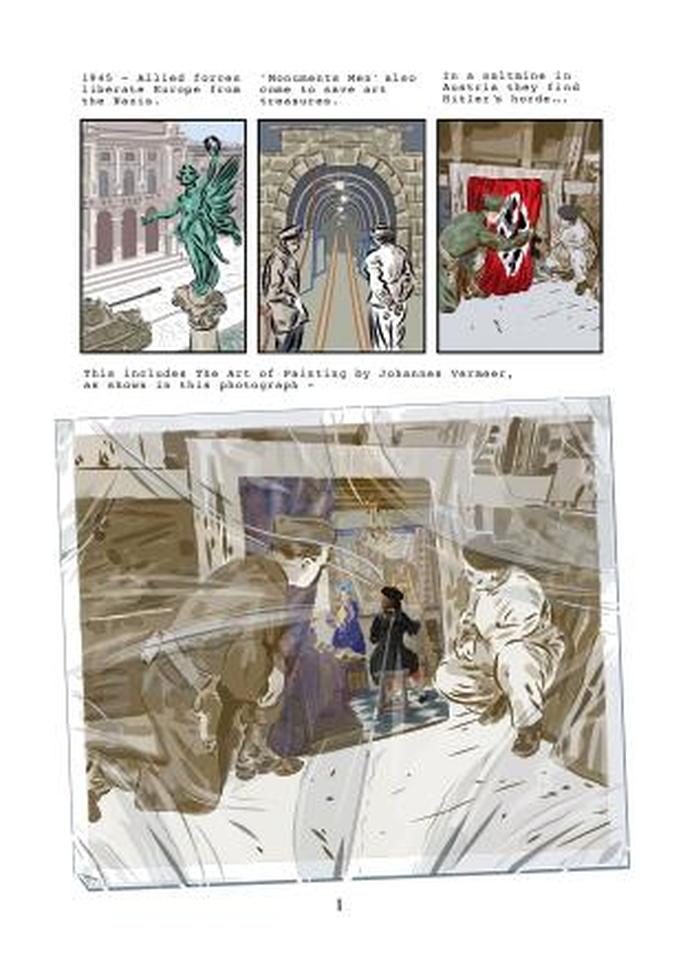 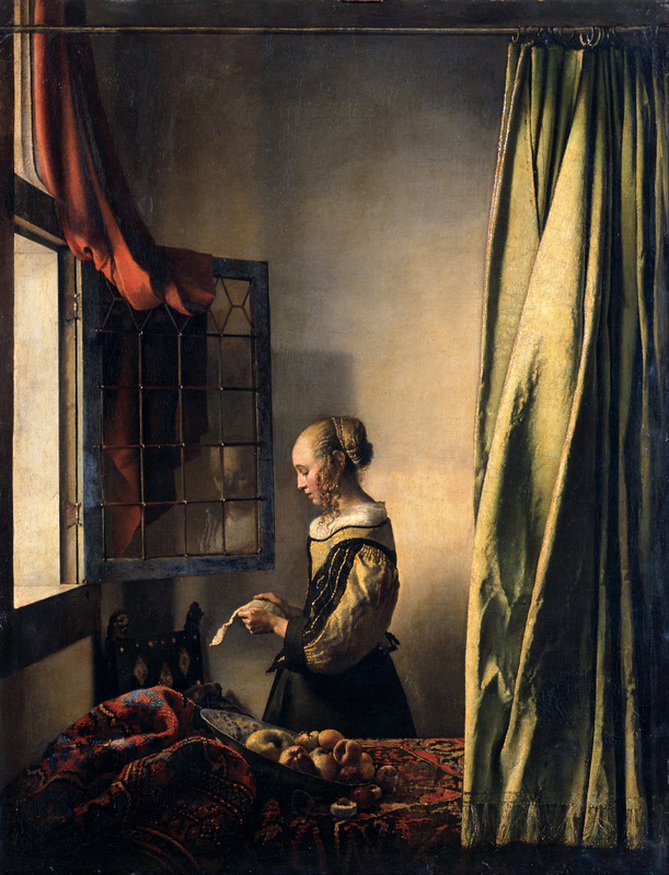 Johannes 'Jan' Vermeer is a 17th Century painter from (what was then) the Dutch Republic. Forgotten after his death, with his paintings often attributed to his rival (I suggest) rival Pieter De Hooch, Vermeer was critically re-appraised, and his stock continues to rise. Why do I want to tell this story? 1. The fascination of the paintings. The initial attraction was Vermeer's paintings, which I consider sublime, historically pioneering and significantly, with formal similarities to comics. They are praised as being proto-photography, and he was one of the first to paint what was visible to the eye, rather than understood by the mind. While de Hooch used optics (apparently) to render (I have vermeer say) "whatever appeared before his eye", Vermeer constructed his scenes carefully, pre-empting the cinematic concept of 'mis en scene', and Jean Luc Godard cites him as "the first cinematographer". Again pre-emptying photography (and comics!) Vermeer was master of choosing 'the golden moment'. 2. Formal similarities to comics. His paintings also seem to contain, time, narrative and sequentiality. For example the painting (above) known as 'Girl Reading a Letter at an Open Window' vividly shows a present moment as the woman reads the letter. Yet the letter must tell of events in the past, and (if, as I propose, the letter is seen as important, and bad news) will shape her future. While the painting is ostensibly a single moment, it can be read sequentially. If we read from top left to bottom right, we first see the billowing red curtain - looked at on it's own it could be seen as flowing blood, foreshadowing the tragedy reported in the letter. The letter appears to crumple as she reads it (in other paintings by him letters are crisp planes). Our eye then tumbles from the letter down the chair and carpet to the plate, from which the fruit appears to spill, as if in reaction to the contents of the letter. 3. I believe I have, and can communicate, interesting insights in the paintings. I believe I can both communicate existing thinking on his work, and offer some fresh perspectives. This reading of the above painting is my own, (which I haven't seen reflected in the few studies of Vermeer), but I think it's a compelling enough vision to pursue. i see in a number of Vermeer's paintings, the attempt to articulate inner experience (an abiding concern of my own comics and other art work) through carefully constructed portrayals of the exterior. Of writers on Vermeer, I have only found Mariet Westermann to identify this "What makes Vermeer's [paintings] interesting is the way they articulate thought in pictorial terms". I have two options for medium-term projects. I have been researching the painter Vermeer, with a view to a possible graphic novel about him. Alternately I could go down the route of a collection of stories about different artists.
In terms of the semester one project, I have two main options: a chapter from the start of the Vermeer project, or the expansion of a story I am currently working on about the painter Uccello. The latter I am working on as a four-page to put in for the Observer graphic short story competition: in that format it is dense in both visual and narrative terms, so I would wish to at some point expand it. This blog records my development work for the Creating Comics Module.
|
AuthorGraham Johnstone ~ Master of Design - Comics and Graphic Novels student 2016-17 Archives
August 2017
Categories |
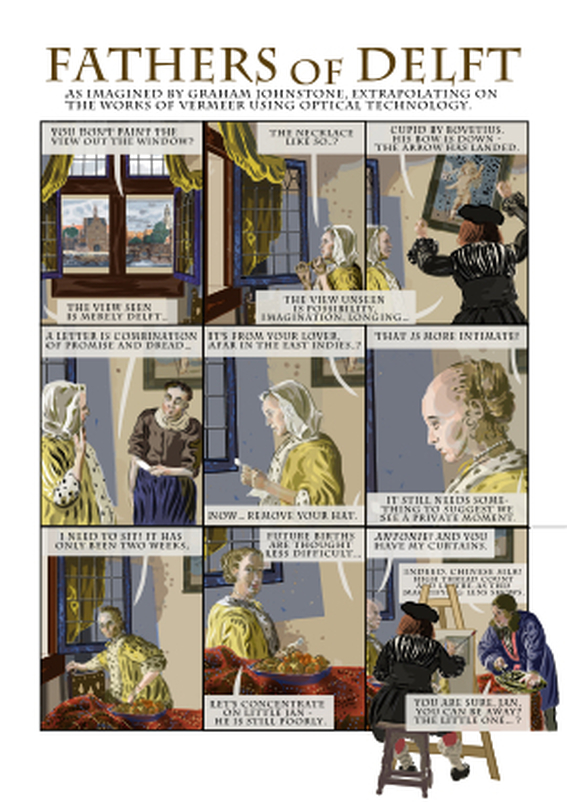
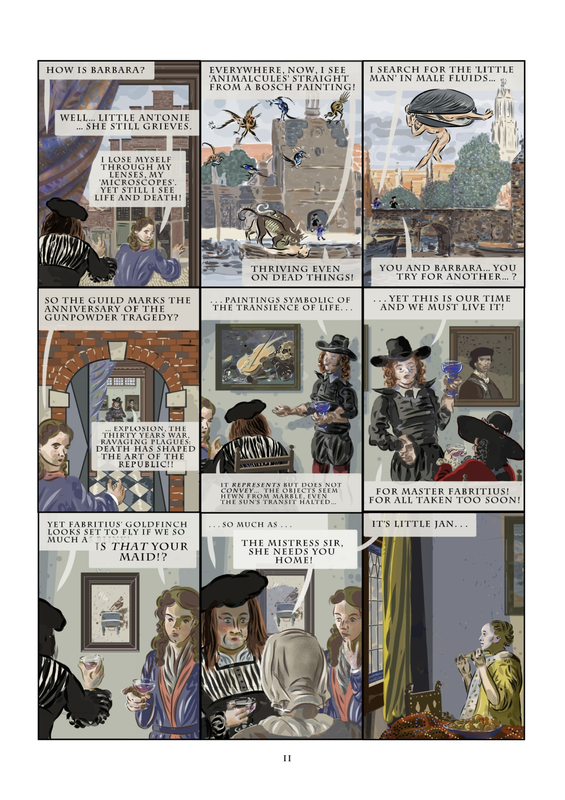
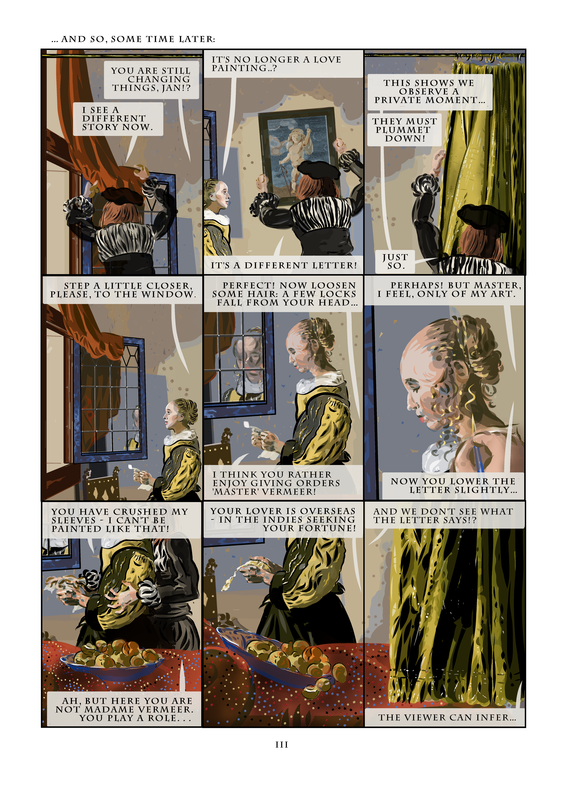
 RSS Feed
RSS Feed